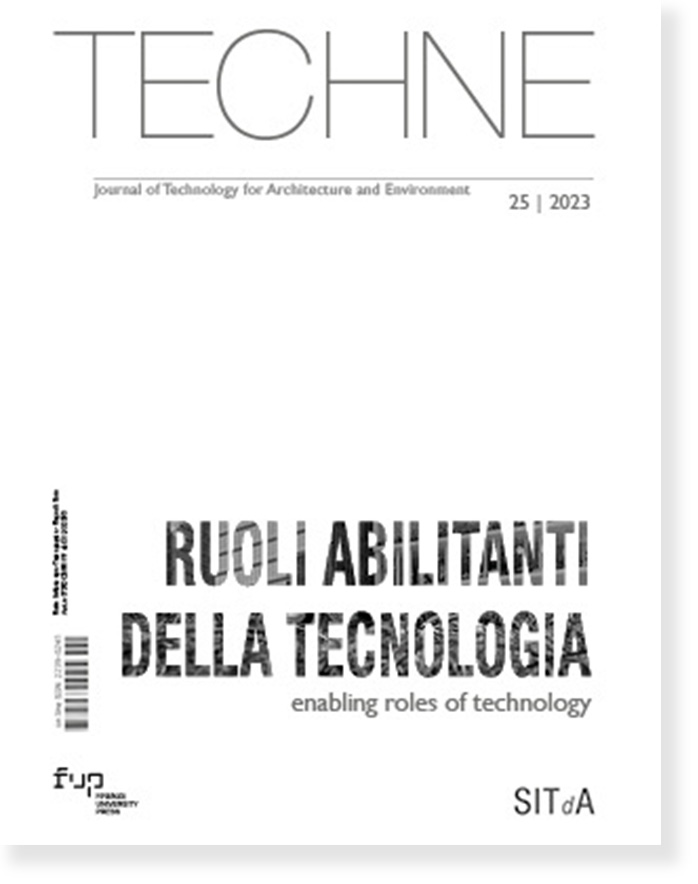Published 2023-05-30
Keywords
- Competence Centre,
- Safeguarding cultural resources,
- Digitisation,
- Enabling technologies,
- Cultural Heritage
How to Cite
Copyright (c) 2023 Andrea Boeri, Serena Orlandi, Rossella Roversi, Beatrice Turillazzi

This work is licensed under a Creative Commons Attribution 4.0 International License.
Funding data
-
H2020 Society
Grant numbers GA 101004468
Abstract
The use of digital technologies is an open and very rapidly evolving field of investigation and experimentation. This paper addresses their role in Cultural Heritage (CH) safeguarding activities, drawing on the research results of the H2020 project “4CH-Competence Centre for the Conservation of Cultural Heritage” (CC) [GA 101004468]. 4CH moves from the human-centric vision of digital transformation, advocated by the EU, and envisages an interdisciplinary approach, combining theoretical and practical knowledge, all in support of a reflection on the role of enabling technologies, the new skills associated with them, the CH preservation and enhancement related approaches, and their integration into the established technical culture.
Downloads
References
Di Giulio, R. et al. (2019), “ICTs for Accessing, Understanding and Safeguarding Cultural Heritage: The Experience of INCEPTION and ROCK H2020 Projects", International Journal of Architectural Heritage, 15:6, pp.825-843.
EUHeritage (2019), Report sul profilo delle competenze professionali nei settori del patrimonio culturale. Available at: https://www.euheritage.eu/wp-content/uploads/2020/07/euheritage_exSummary_IT.pdf (Accessed on 05/08/2022).
EC (2011), COMMISSION RECOMMENDATION of 27 October 2011 on the digitisation and online accessibility of cultural material and digital preservation (2011/711/EU).
EC (2020), Public consultation on opportunities offered by digital technologies for the culture heritage sector. Available at: https://digital-strategy.ec.europa.eu/fr/node/873 (Accessed on 05/08/2022).
EC (2021), COMMISSION RECOMMENDATION of 10.11.2021 on a common European data space for cultural heritage.
EP and the Council of the European Union (2021), Regulation (EU) 2021/694 of the European Parliament and of the Council of 29 April 2021 establishing the Digital Europe Programme and repealing Decision (EU) 2015/2240 (Text with EEA relevance) PE/13/2021/INIT.
EP (2008), Recommendation of the European Parliament and of the Council of 23 April 2008 on the establishment of the European Qualifications Framework for lifelong learning (Text with EEA relevance) (2008/C111/01).
Europeana (2020), Strategy 2020-2025, Empowering Digital Change. Available at: https://pro.europeana.eu/files/Europeana_Professional/Publications/EU2020StrategyDigital_May2020.pdf (Accessed on 05/08/2022).
Expert Group on Digital Cultural Heritage and Europeana (2020), Basic principles and tips for 3D digitisation of tangible cultural heritage for cultural heritage professionals and institutions and other custodians of cultural heritage. Available at https://digital-strategy.ec.europa.eu/fi/node/697 (Accessed on 05/08/2022).
Maietti, F., Medici, M. and Ferrari, F. (2021), “Un Competence Centre europeo per la conservazione del patrimonio”, Paesaggio Urbano, 2, pp. 91-99.






